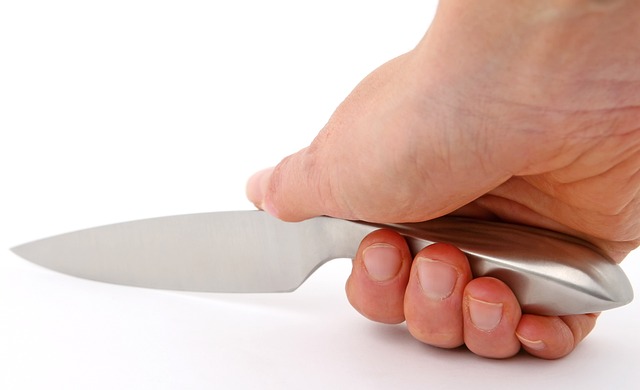
Stainless steel appliances add a touch of modern sophistication to your al fresco haven. These outdoor appliances, which range from grills to refrigerators, withstand the elements and seamlessly blend functionality and aesthetics. However, in order to keep these stainless steel marvels looking and working like new, a little upkeep goes a long way. In this comprehensive guide, we will go on a journey to learn the art of cleaning and maintaining your outdoor stainless steel appliances. Let us unravel the secrets to keeping them immaculate against the whims of nature, so that your al fresco haven is not only inviting but also a monument to enduring beauty.
See also our post on How to Clean and Refresh Your Home’s Pillowcases
Understanding Outdoor Elements
Identify Environmental Factors
Recognize the environmental factors impacting your outdoor stainless steel appliances. Whether it’s coastal salt air, sun exposure, or bird droppings, understanding these elements helps tailor your cleaning and maintenance routine.
Seasonal Considerations
Adapt your approach based on seasons. Winter may bring salt and snow, while summer introduces intense sunlight. Consider these seasonal nuances when planning the care regimen for your outdoor stainless steel.
Frequency of Use
The more frequently you use your outdoor appliances, the more attention they require. Regular use exposes them to grease, food splatters, and varying temperatures, necessitating more frequent cleaning and maintenance.
Proximity to Greenery
If your outdoor space is surrounded by greenery, expect issues like pollen, sap, and bird-related debris. Factor in these natural elements when planning your cleaning routine to address specific challenges.
Material Compatibility
Understand the compatibility of cleaning materials with stainless steel. Avoid abrasive tools that could scratch the surface and choose cleaning agents that are safe for stainless steel to ensure longevity.
Daily Cleaning Practices
Quick Wipe Downs
After each use, give your stainless steel appliances a quick wipe down. Use a soft, microfiber cloth to remove surface dirt, fingerprints, and any food residue. This simple step prevents build-up and maintains the appliances’ appearance.
Gentle Soap and Water Solution
Create a gentle soap and water solution for more thorough cleaning. Dampen the cloth with the solution and wipe the stainless steel surfaces. Ensure you rinse thoroughly and wipe dry to prevent water spots.
Avoid Harsh Cleaning Agents
Steer clear of harsh cleaning agents that may contain chlorine, bleach, or abrasive particles. Opt for mild, non-abrasive cleaners specifically designed for stainless steel to avoid damaging the surface.
Use a Soft Bristle Brush for Crevices
For appliances with crevices or textured surfaces, use a soft-bristle brush to reach into these areas. Gently scrub to dislodge any debris, making sure not to apply excessive pressure to avoid scratching.
Dry Thoroughly After Cleaning
Always dry your stainless steel appliances thoroughly after cleaning. This prevents water spots and ensures a streak-free, polished finish. Use a dry, clean cloth or towel for the best results.
See also our post on How to Clean and Organize Your Pet’s Travel Essentials: Happy Journeys
Dealing with Stains and Rust
Promptly Address Stains
Address stains promptly to prevent them from setting into the stainless steel. Common culprits include food residues, grease splatters, and mineral deposits. Quick action makes stain removal more manageable.
Baking Soda for Stain Removal
Create a paste with baking soda and water to tackle stubborn stains. Apply the paste to the affected areas, let it sit for a short time, and then gently scrub with a soft cloth. Rinse and dry thoroughly.
White Vinegar for Rust
If you notice any signs of rust, white vinegar can be a natural remedy. Apply vinegar to the affected areas, let it sit for a few minutes, and then scrub gently. Rinse and dry thoroughly to prevent further rusting.
Lemon Juice for Water Spots
Lemon juice is effective for removing water spots. Apply lemon juice to the affected areas, let it sit for a short time, and then wipe away with a clean, damp cloth. Ensure thorough drying afterward.
Rust-Inhibiting Products
Consider using rust-inhibiting products designed for stainless steel. These products create a protective barrier against rust formation and help maintain the appliances in pristine condition.
Polishing for Lasting Shine
Choose the Right Polish
Select a high-quality stainless steel polish for maintaining a lasting shine. Ensure the polish is suitable for outdoor use and provides a protective layer against environmental elements.
Apply Polish in the Direction of Grain
When applying stainless steel polish, always follow the direction of the grain. This technique ensures an even application and enhances the overall appearance of the stainless steel surface.
Use Microfiber Cloth for Polishing
Opt for a microfiber cloth when polishing your outdoor stainless steel appliances. Microfiber is gentle and helps achieve a streak-free shine without scratching the surface.
Polish Regularly
Incorporate regular polishing into your maintenance routine. Depending on environmental factors and usage frequency, polishing every few weeks or months can keep your stainless steel appliances looking as good as new.
Test New Products in Small Areas
Before applying a new polish or cleaning product, test it in a small, inconspicuous area to ensure compatibility with your stainless steel appliances. This precaution prevents any unwanted reactions or damage.
See also our post on How to Clean and Revitalize Your Home’s Outdoor Planters
Protecting Against Corrosion
Apply a Protective Coating
Consider applying a protective coating specifically designed for outdoor stainless steel. These coatings form a barrier against corrosion, UV rays, and other environmental factors, extending the life of your appliances.
Regularly Check Seals and Gaskets
Inspect seals and gaskets on outdoor appliances for signs of wear or damage. Damaged seals can lead to water infiltration, contributing to corrosion. Replace any compromised seals promptly.
Elevate Appliances Off the Ground
To prevent contact with moisture and potential rusting, elevate your outdoor stainless steel appliances off the ground. Use weather-resistant pads or risers to create a barrier between the appliances and the surface.
Address Scratches Immediately
If you notice scratches on the stainless steel surface, address them promptly. Use a stainless steel cleaner or polish that includes scratch repair properties to minimize the appearance of scratches.
Monitor Weather Conditions
Be mindful of extreme weather conditions. If severe weather is forecasted, consider covering your outdoor appliances with weather-resistant covers to protect them from the elements.
Caring for Specific Appliances
Cleaning Outdoor Grills
For outdoor grills, focus on cleaning the grates after each use. Use a grill brush to remove residue and consider a deep cleaning periodically to maintain optimal performance.
Maintaining Stainless Steel Cabinets
Stainless steel cabinets may require additional attention. Clean surfaces regularly and check for any signs of rust or corrosion, addressing these issues promptly to preserve the cabinet’s integrity.
Cleaning Outdoor Refrigerators
Clean the exterior of outdoor refrigerators with a mild soap solution, ensuring you pay attention to handles and hinges. Regularly check the interior for spills and expired items to maintain freshness.
Caring for Stainless Steel Sinks
For outdoor stainless steel sinks, clean regularly with a mild detergent. Rinse thoroughly and dry after each use to prevent water spots and mineral deposits.
Treating Stainless Steel Countertops
Stainless steel countertops benefit from regular cleaning and polishing. Use a gentle cleaner suitable for food preparation areas and avoid abrasive tools that could scratch the surface.
Safety and Precautions
Wear Protective Gear
When using cleaning agents or polish, consider wearing protective gear such as gloves and safety glasses. This precautionary measure safeguards your skin and eyes from potential irritation.
Keep Children and Pets Away
During the cleaning and maintenance process, ensure that children and pets are kept at a safe distance. This prevents accidental exposure to cleaning agents and ensures a hazard-free environment.
Properly Dispose of Cleaning Materials
Dispose of cleaning materials responsibly. Follow local guidelines for the proper disposal of cleaning agents and any materials used in the maintenance of your outdoor stainless steel appliances.
Ventilation During Cleaning
Maintain proper ventilation during the cleaning process, especially when using cleaning agents. Open windows or doors to allow fresh air to circulate and prevent the accumulation of fumes.
Store Cleaning Products Safely
Store cleaning products in a safe and secure location, out of reach of children. Ensure that lids are tightly sealed to prevent accidental spills or exposure.
See also our post on The Art of Cleaning and Maintaining Your Outdoor Swingsets
Conclusion
Stainless steel appliances are essential to the design of your outdoor oasis because they turn your area into a social hub and a haven for entertaining. Learning the ins and outs of cleaning and caring for these outdoor wonders will help you preserve their aesthetic appeal as well as guarantee their durability in the face of the elements’ unpredictable dance. So, let the stainless steel shine against the background of your outdoor canvas as a testament to careful maintenance and a dedication to outdoor living at its best. As we explore the art of outdoor maintenance, may your stainless steel appliances serve as timeless symbols of elegance, toughness, and the limitless pleasure of al fresco living.







